On my third day in the country, we drove to the community of Santiago de Okola, on the northeastern shore of Lake Titicaca. This diary covers our delicious lunch of local, indigenous foods and the tour we took of the community afterward.
When we reached the community of Santiago de Okola, our van dropped us off in front of the home of Don Tomas, the leader of the community. There, we enjoyed a delicious lunch of local, indigenous foods, before Don Tomas led us on a tour of the community.
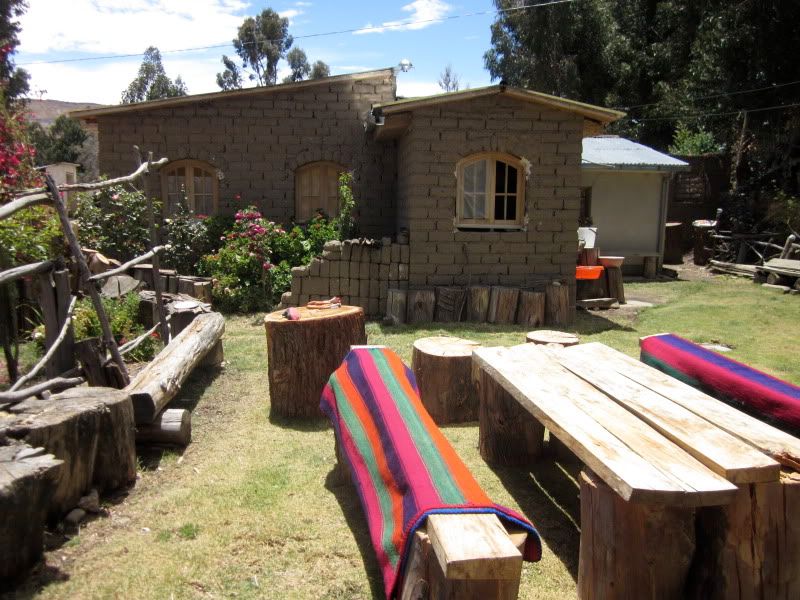
The home of Don Tomas
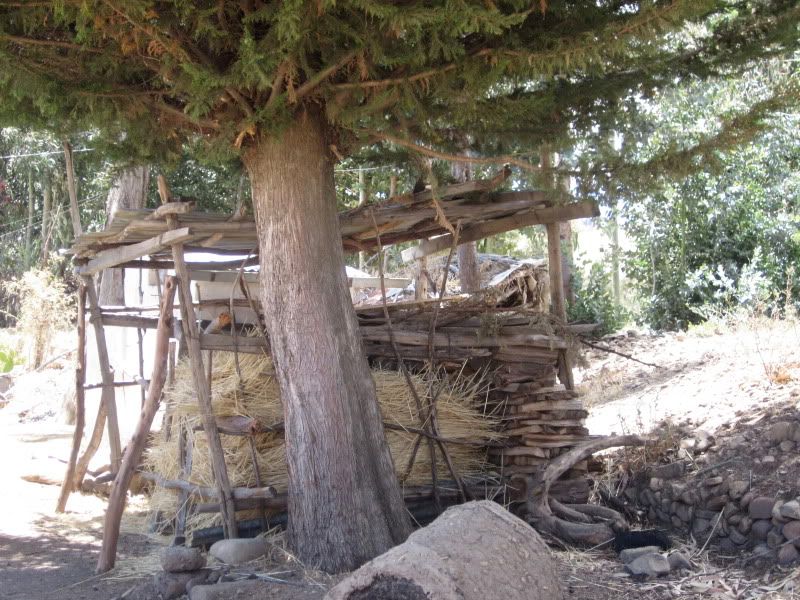
Like nearly every home in this part of Bolivia, Don Tomas had a haystack outside of his house.
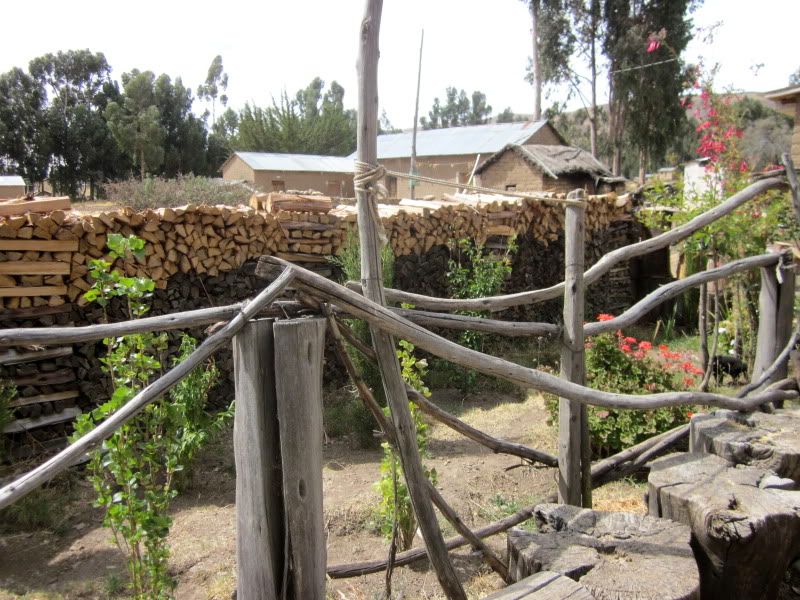
Don Tomas had a number of flowers growing in his yard, and he also told me he had young peach and plum trees. (Those trees might be an indication of climate change, if they are able to survive and produce fruit there, but I am not sure.)
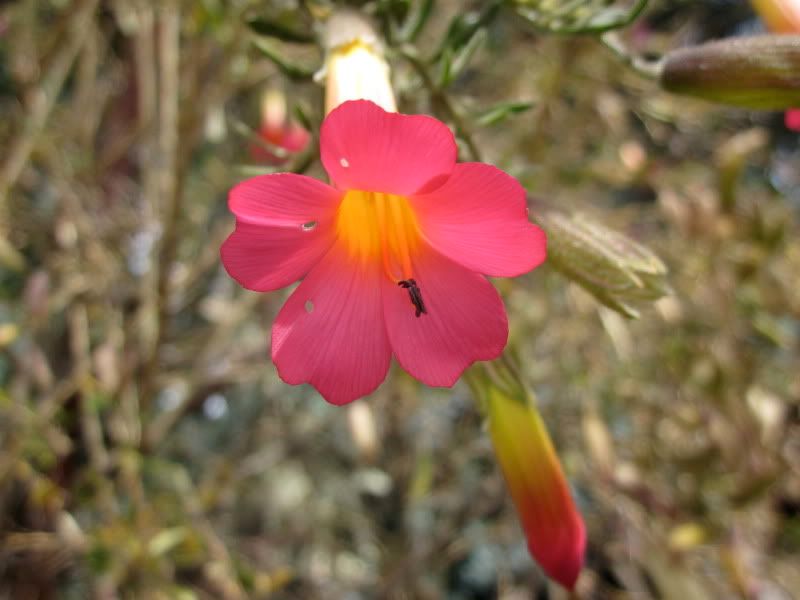
Bolivia's national flower, which is the same colors as the Bolivian flag, Red, Yellow, and Green
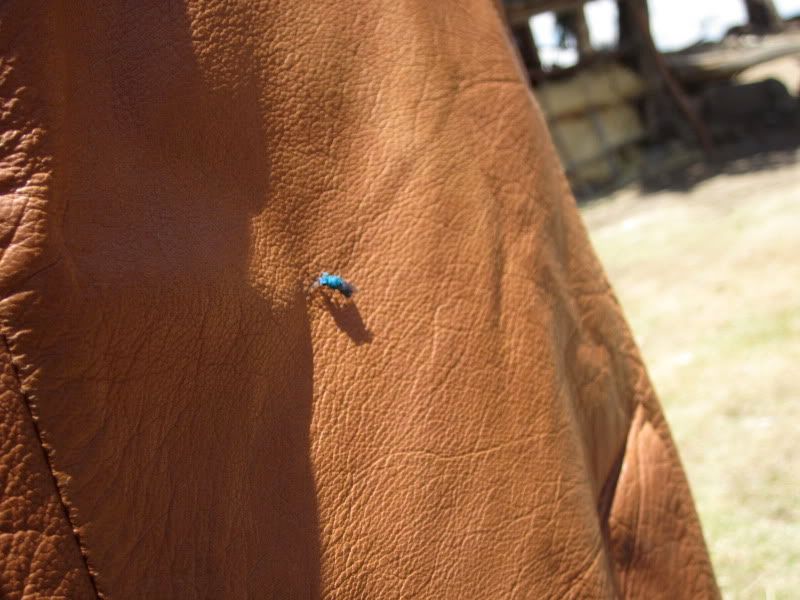
The fly is TURQUOISE! Crazy! Wonder what species this is?
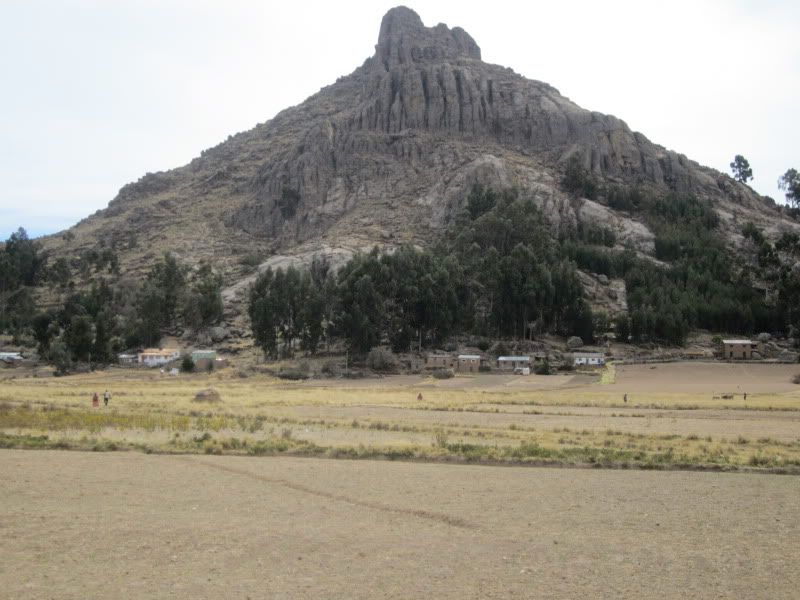
A view of Sleeping Dragon
All I can say about lunch is: I hope you like potatoes and quinoa, because that's what's on the menu. We started with drinks made from quinoa and barley (both heavily sweetened and delicious). Then several women began unloading their awayos (the beautiful woven blankets cholitas wear on their backs to carry things), placing tons of food on the table, more than we could ever eat. Notice how the food is wrapped in woven cloths, instead of plastic, aluminum foil, or tupperware?
The meal included oca, a delicious tuber native to the Andes, and chuño, a less delicious type of dehydrated potato that is popular in Bolivia. We were told during lunch that making chuño requires freezing temperatures, and this winter was so warm that Bolivians were afraid for a while that they would not be able to make chuño at all. Fortunately, they got a freezing day or two, so they made their chuño after all.
The tiny dried fish come from Lake Titicaca, and they have a story as well. For three years recently, the fish were gone from the lake. The people suspect pollution from a nearby gold mine, or perhaps the climate crisis or overfishing. Fortunately, this year they have fish again. The fish are so small that they are eaten whole.
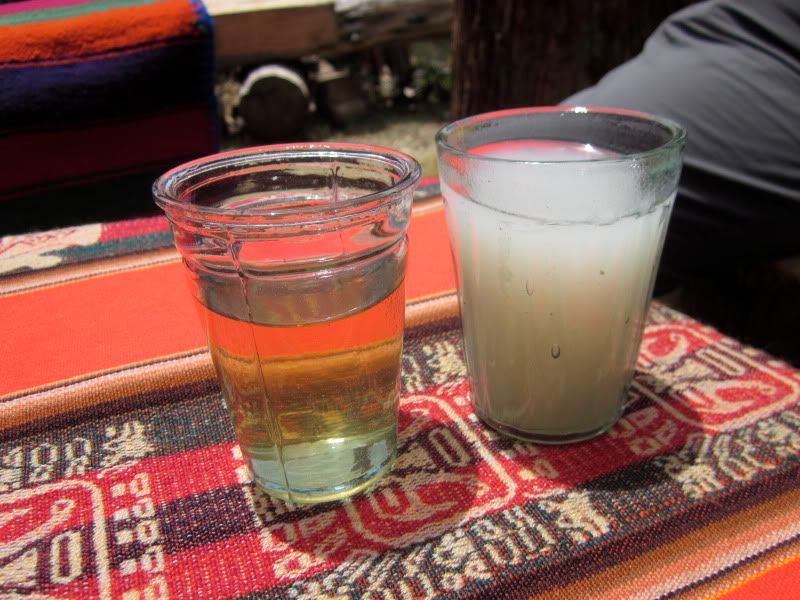
Barley juice on the left, quinoa on the right
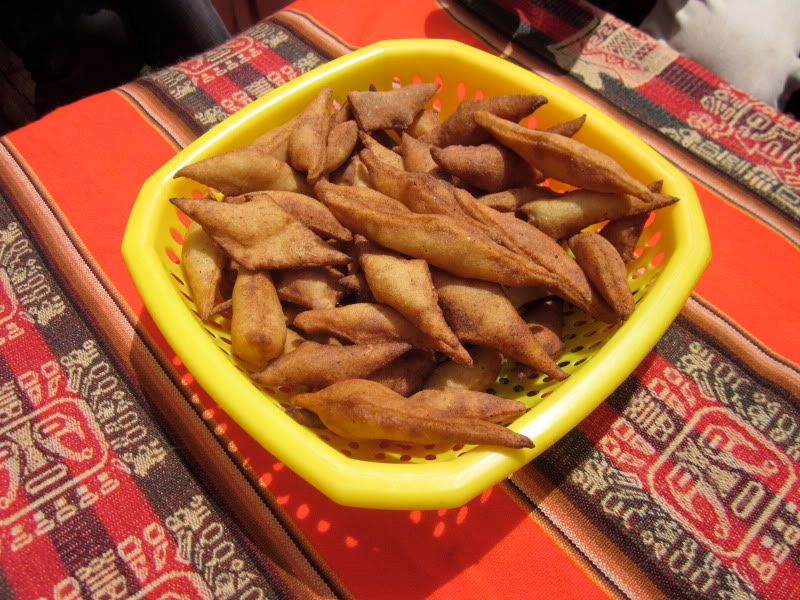
Delicious fried quinoa... somethings

Corn, oca (a tuber), and an omelet made with onions and potatoes
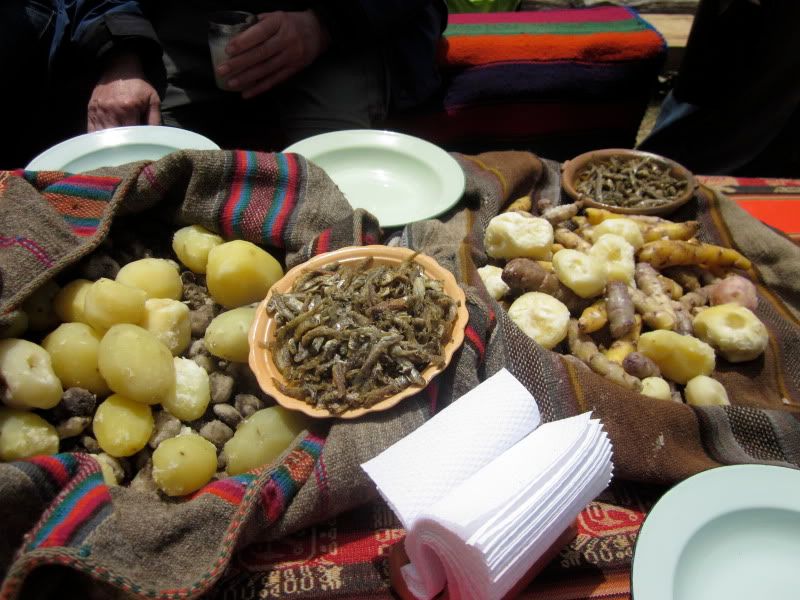
Dried fish, several kinds of potatoes, and oca
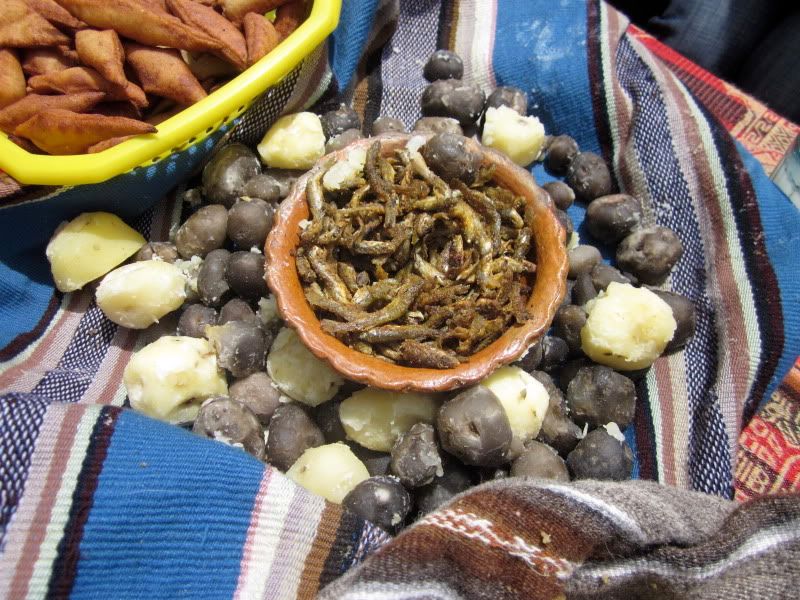
More potatoes and dried fish. No oca in this picture. I believe the darker potatoes shown here are chuño, a food made by dehydrating potatoes. I am not a chuño fan.
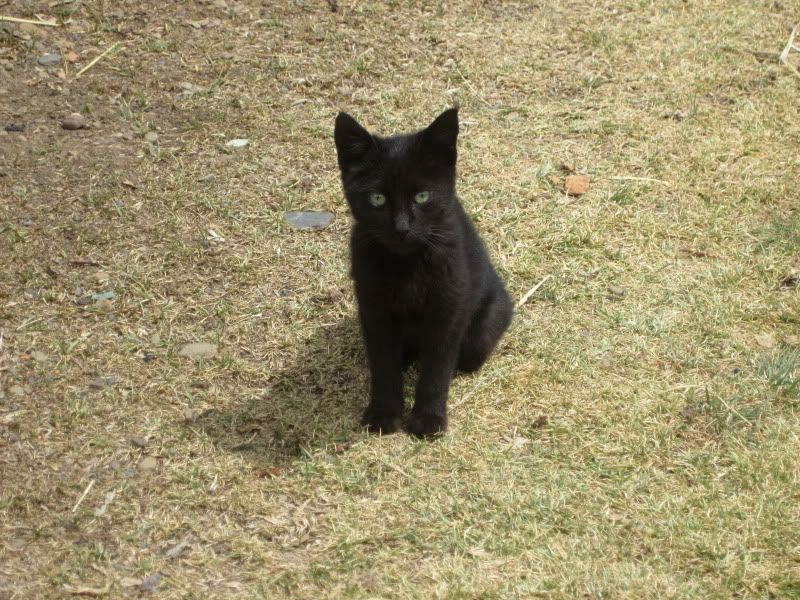
Oh cat, I wish I could give you my share of the fish.
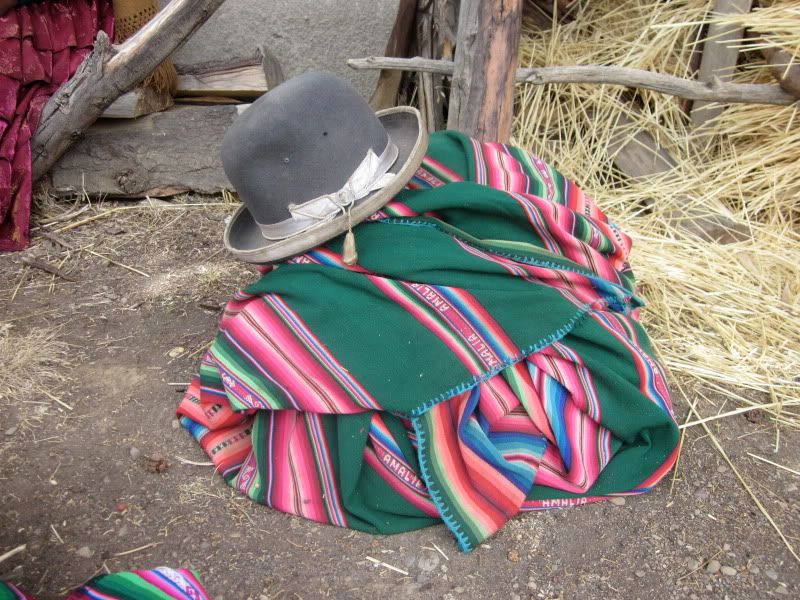
Cholita gear, left on the lawn during lunch.
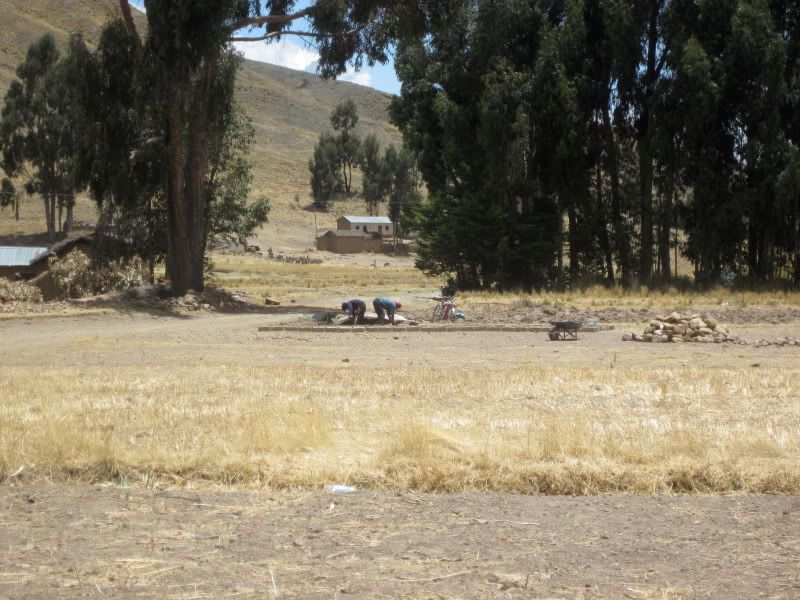
The family next door, making adobe while we ate.
After lunch, it was time for our tour. I don't know what I expected, but I did not expect what we got. Don Tomas led the tour. He began by showing us a canal made by an ancient civilization that resided here in Santiago de Okola. He explained that there were three "generations" of ancient civilizations who lived here and he showed where each was buried. Then, he jokingly told us "We are the fourth generation, and our cemetery is over there."
The first "generation," he said, lived about 6000 years ago. They had small bodies and no pottery. The second generation was stronger and taller. They had pottery. The third had metals like copper and some bronze. (Bronze was used in the Andes but it was not nearly as widely used or as significant as it was in Eurasia.) Don Tomas was not sure which of these civilizations built the mysterious canal.
Next, he showed us an ancient tomb. He did not know very much about it, but his community considered it a sacred spot. They never planted or tilled the tomb, nor did they excavate it. They would like to have an archaeologist come and help them learn more about the past civilizations who lived there. The tomb was simply a small mound. While we stood near it, I took a few pictures:
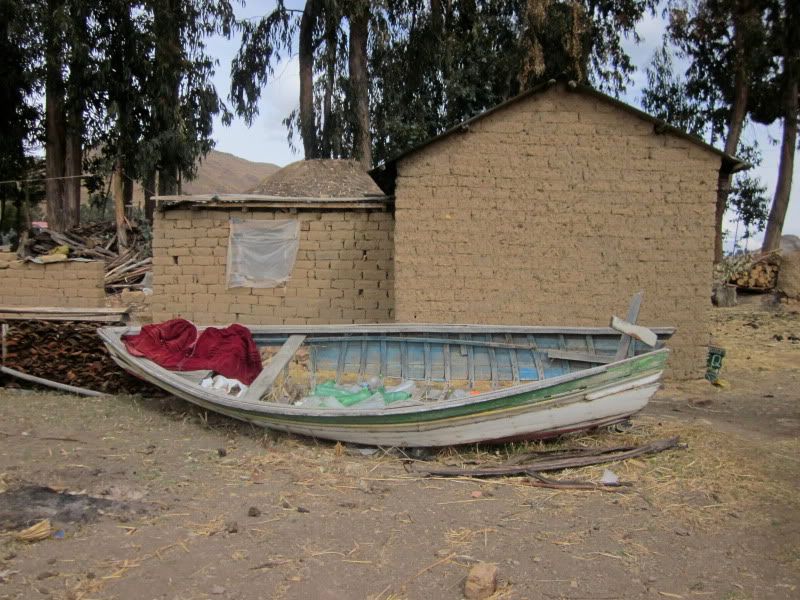
A boat, filled with empty plastic bottles. Plastic packaging is a problem here, since there's no trash service and no recycling.
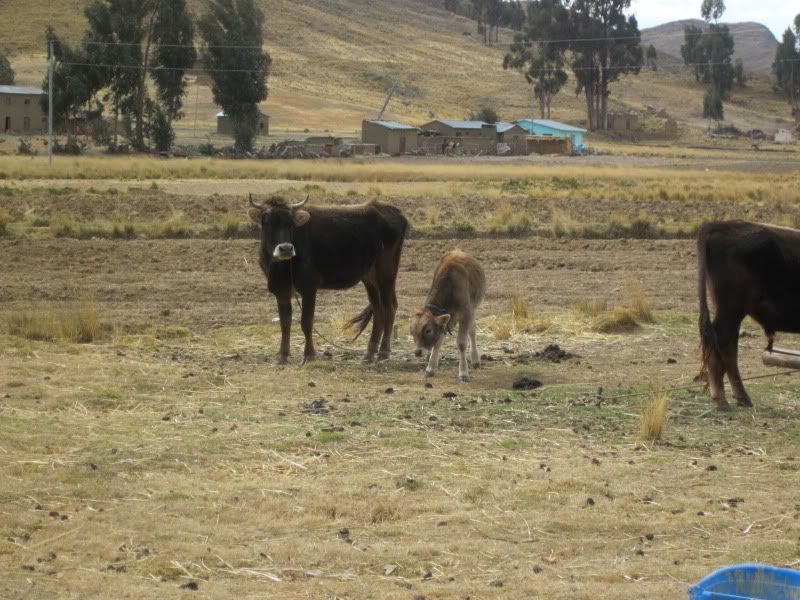
Awww, a baby

So cute!
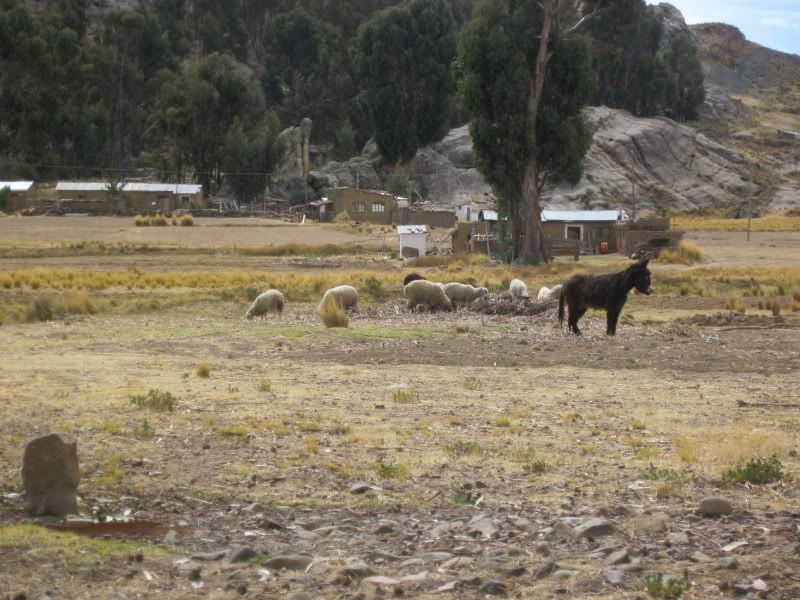
Some sheep, and a donkey
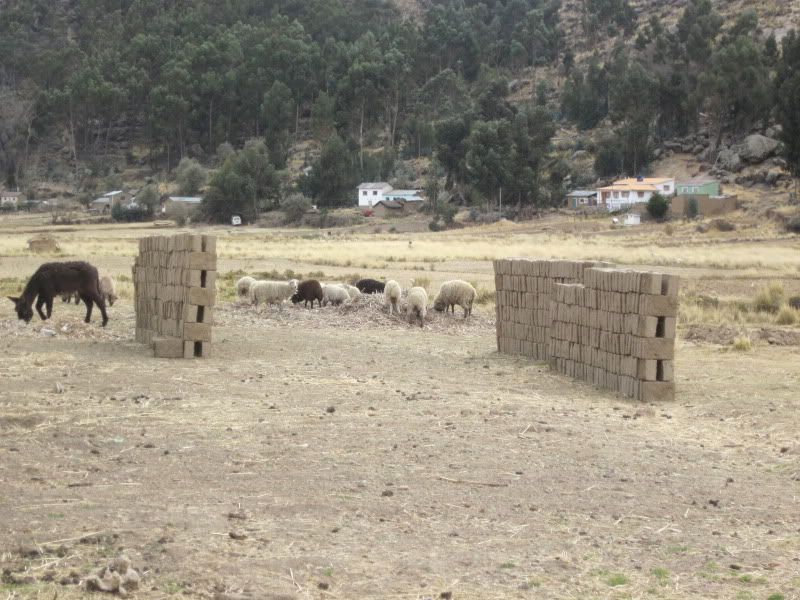
More adobe bricks
From there, we headed toward the beach passing, a man sweeping, some interesting plants, the community's school, a few office buildings, their church, and a woman herding sheep as we went. A few dogs followed us. We also passed a few long mounds of gravel and we asked what they were. Don Tomas told us they had had a flood recently, and they were building something to channel any future flood waters to keep them from damaging their village. I couldn't resist taking a picture of a few sheep who climbed up on these gravel mounds. Don Tomas told us as we walked that he thought that the many eucalyptus trees in Santiago de Okola were wonderful, because he remembered much more disease in the community before the trees were planted, and now they use eucalyptus for medicine. Eucalyptus trees are often planted in Bolivia because they are fast growing and useful in the mining industry. They also suck up an awful lot of water, which can be a bad thing.
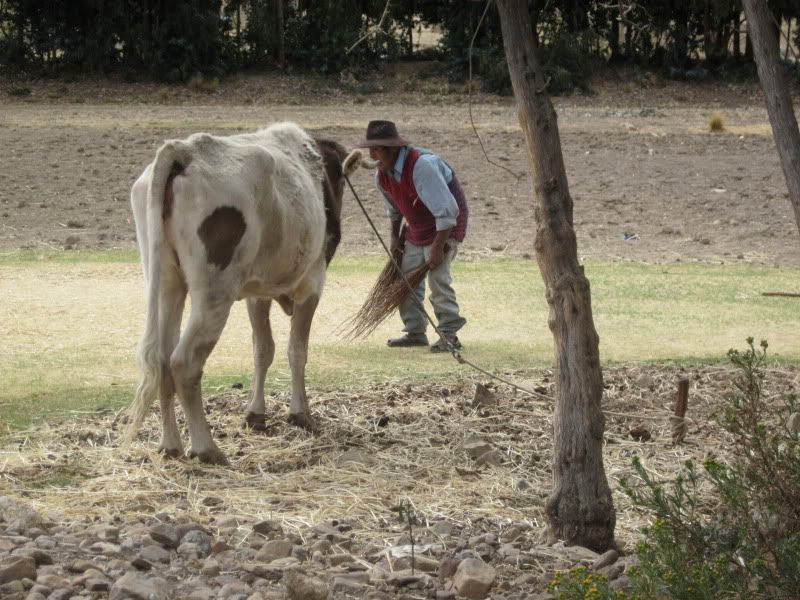
A man sweeping
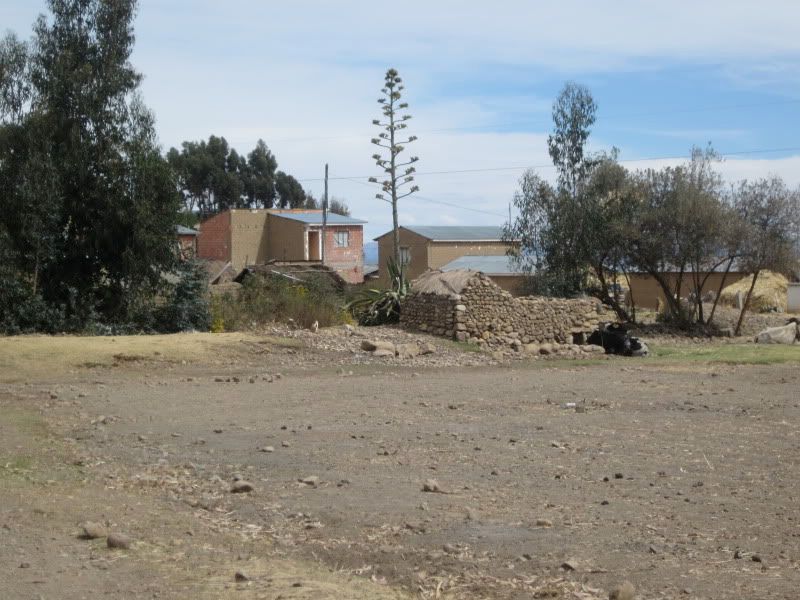
See the tall flowering plant? It's a type of yucca.

A medicinal plant

Another medicinal plant
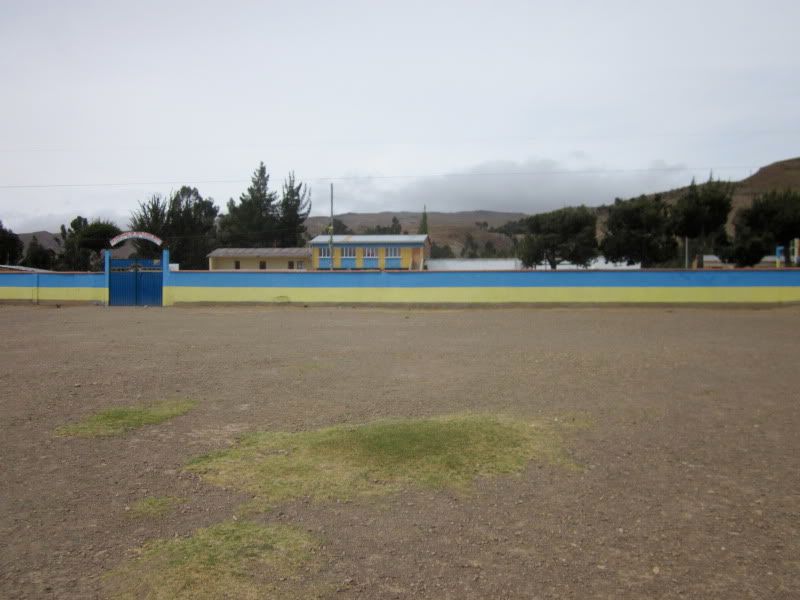
The school
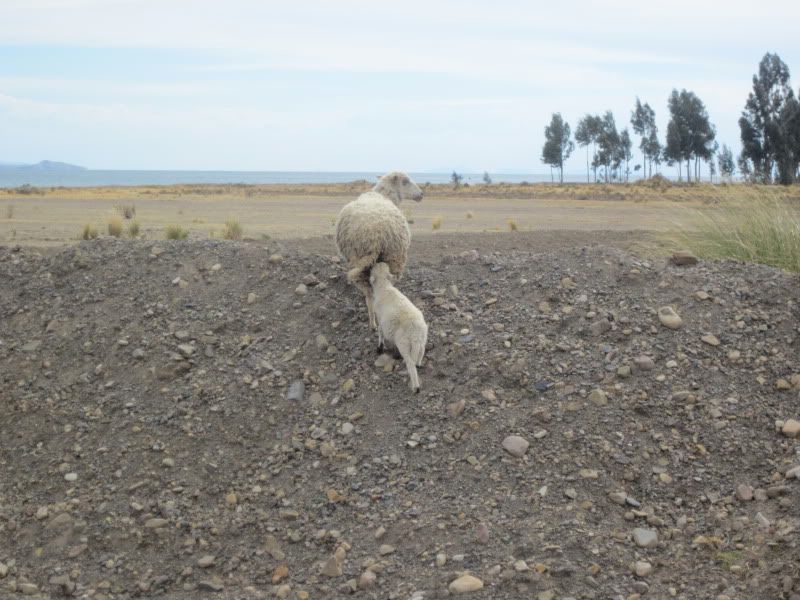
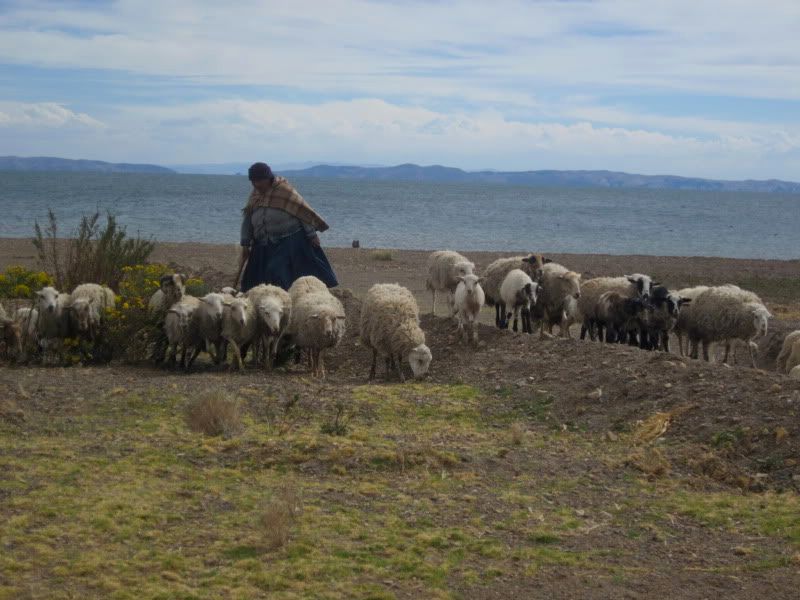
Herding sheep
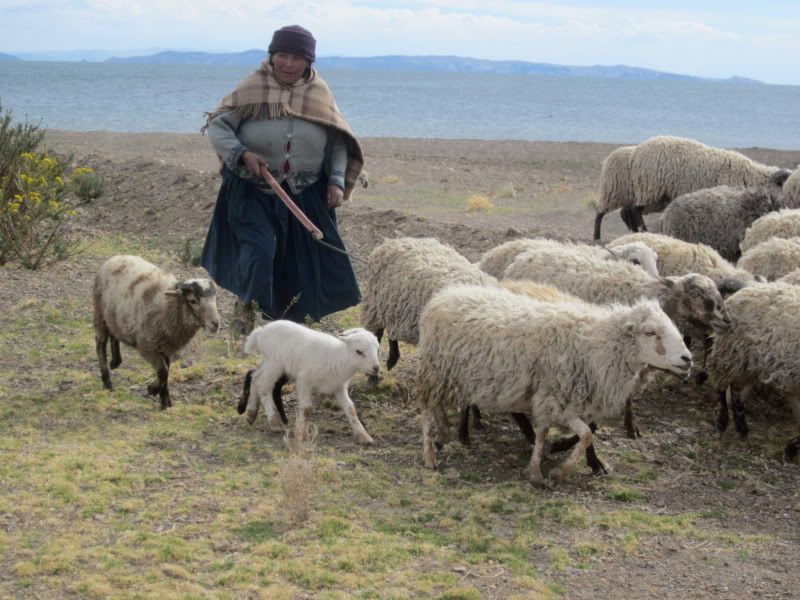
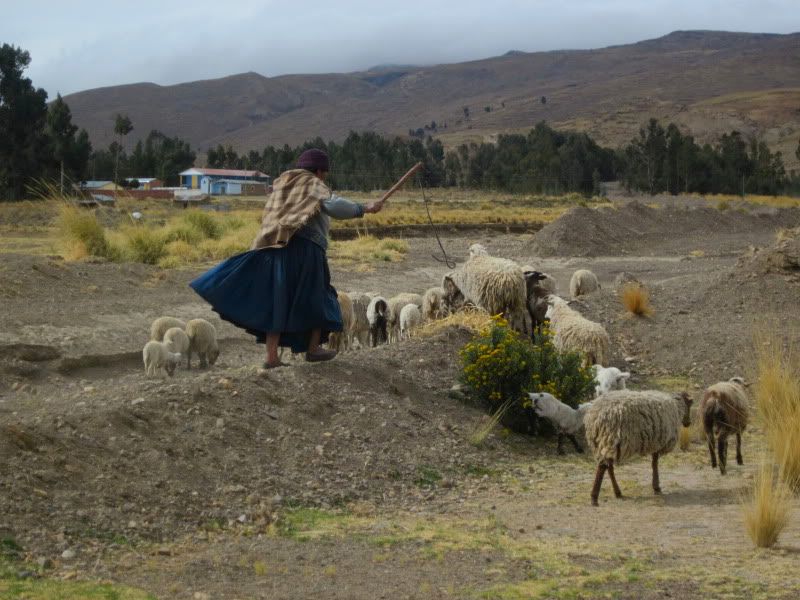
This was a point at which she seemed to have totally lost control of the sheep and she was trying to get it back.
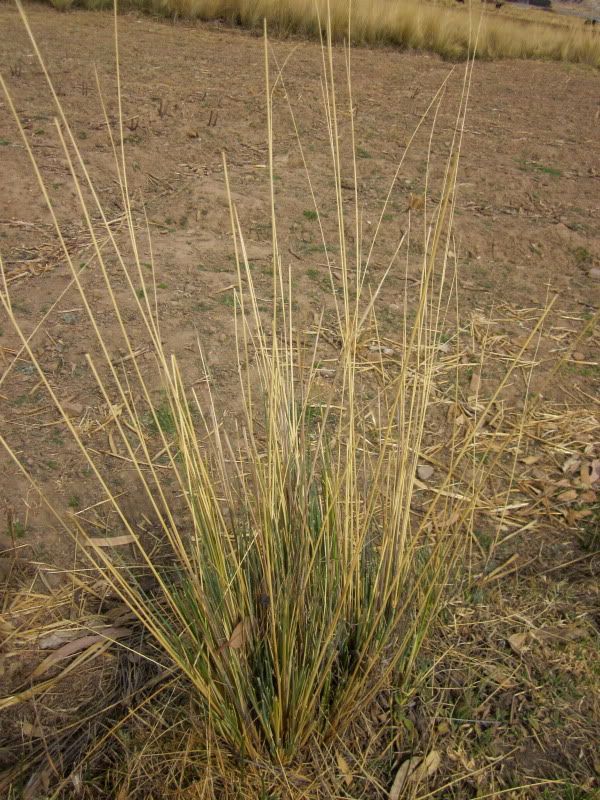
One of the grasses that grows on the Altiplano
When we reached the beach, we first saw a long field of potatoes and fava beans growing, nearly up to the water's edge. Don Tomas explained that they use algae from the lake as fertilizer for their crops. In at least one case, I saw the favas and potatoes interplanted with one another (a great idea!). Don Tomas also pointed out a plastic bag on the beach and said how harmful plastic litter is to their community and their lake. Also, in the lake, several rowboats were docked near the shore. We were told that Santiago de Okola is about an hour and a half from the Island of the Sun by boat.
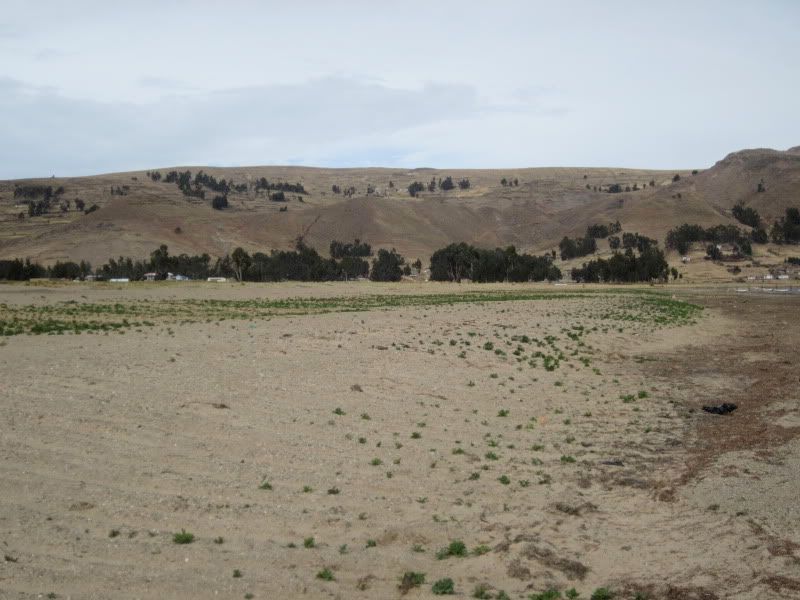
Potatoes growing, intercropped with fava beans
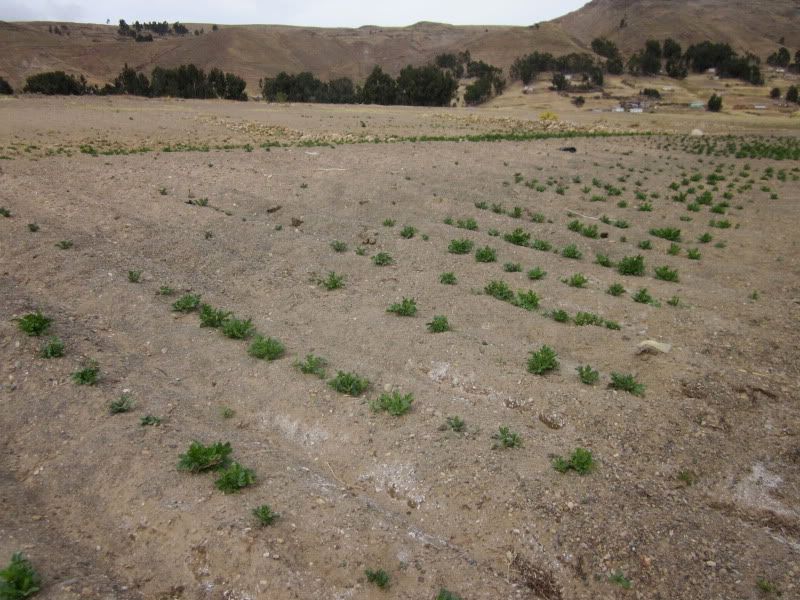
More potatoes
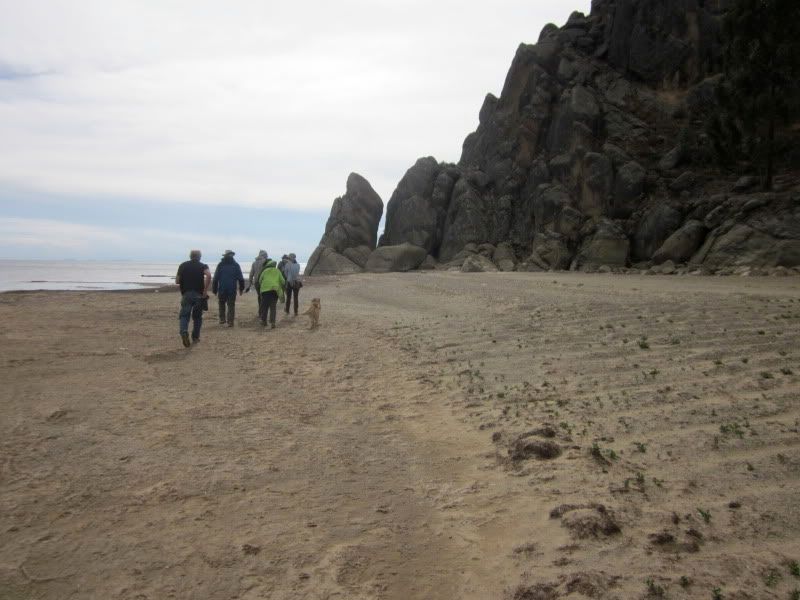
Members of our group, walking on the beach next to the rows of potatoes growing
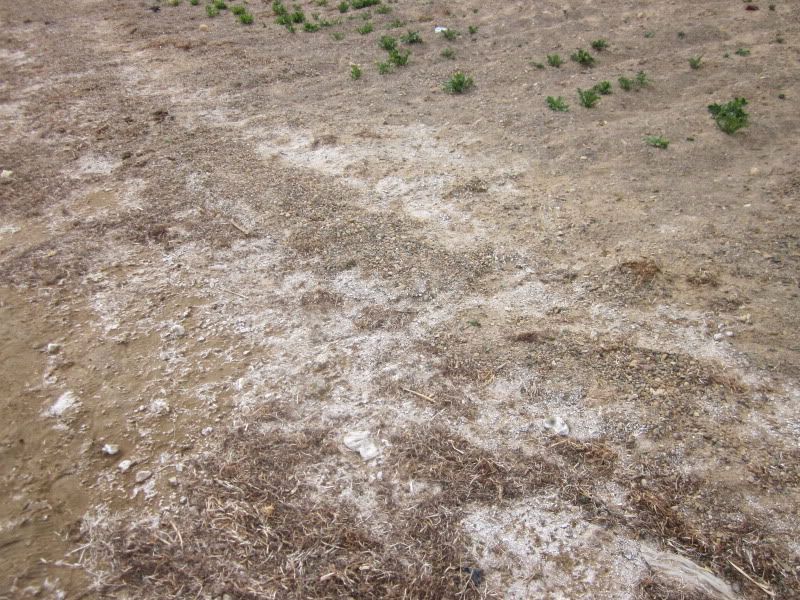
Salt left behind by Lake Titicaca. The lake is salty, but it's only right on the threshold of actually being classified as saltwater. Relatively speaking, it's not very salty.
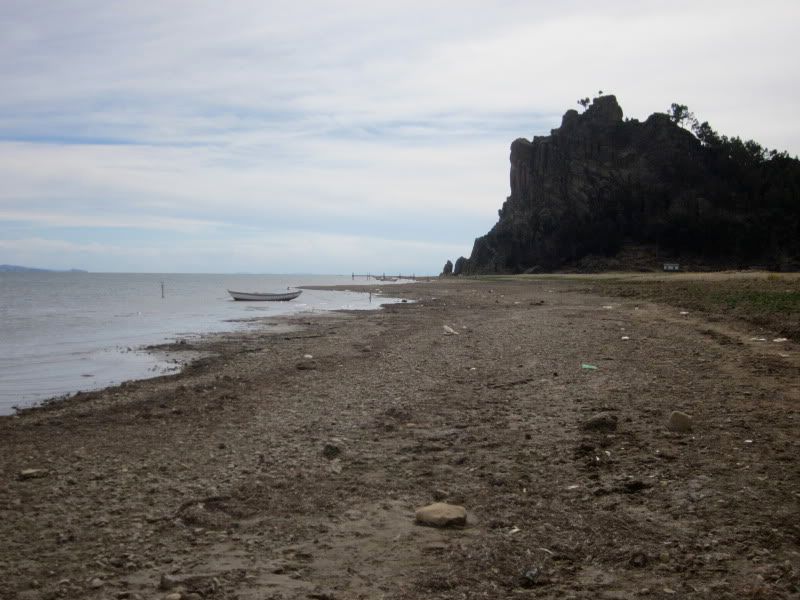
Boats on the lake

A plastic bag on the beach
Our next stop were some ancient paintings, which were quite faded and unfortunately interspersed with modern graffiti. Near the paintings was a small cave. Don Tomas told us a story of how the cave is "mysterious" (I think he might have meant haunted). The story was not well translated, but I think the gist of it was that anyone who spent a night in the cave heard strange music and then went crazy. He mentioned a family from the village who recently had a picnic there, and said that prior to doing so, the family made an offering to Pachamama (Mother Earth, in the Aymara tradition) and prayed to Jesus. As we stood there, one of the dogs who was following us went for a swim in the lake. Don Tomas said that this part of the beach is sacred, so no crops are planted here. However, maybe it is losing some of its magic because people visit it too often.
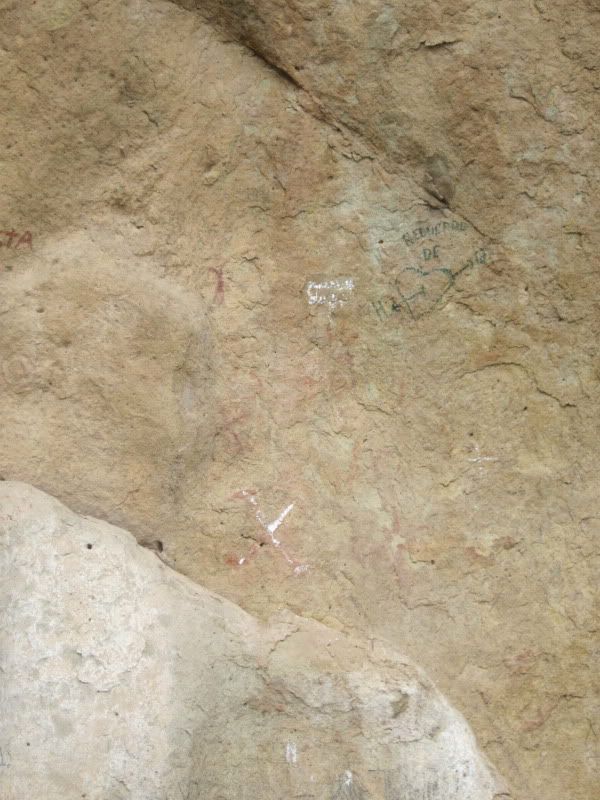
Ancient paintings
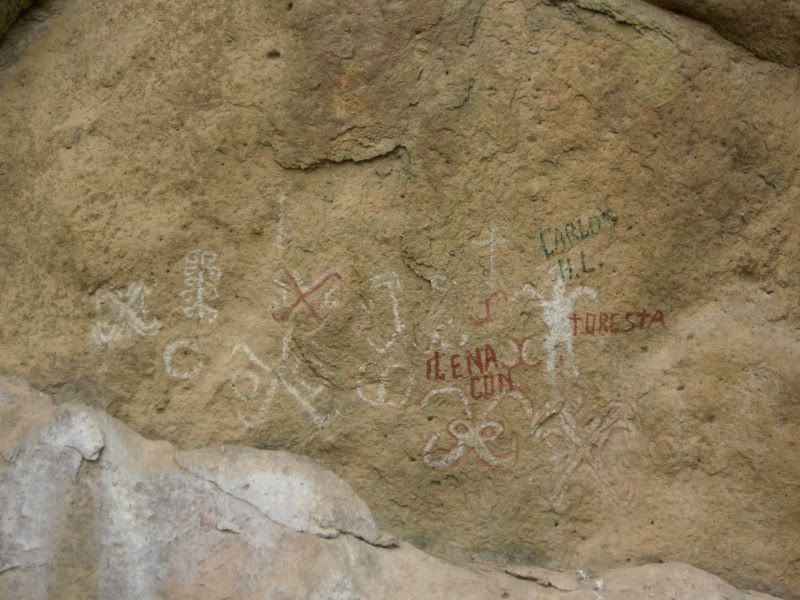
More ancient paintings - and some modern graffiti

The mysterious haunted cave.
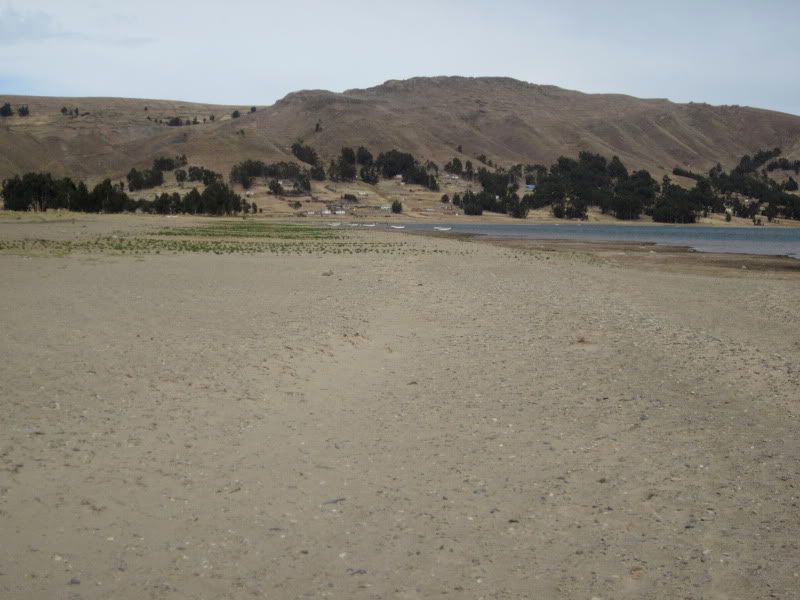
Potatoes growing in the distance. The part of the beach in the foreground is sacred and crops are not grown there.

Time for a swim
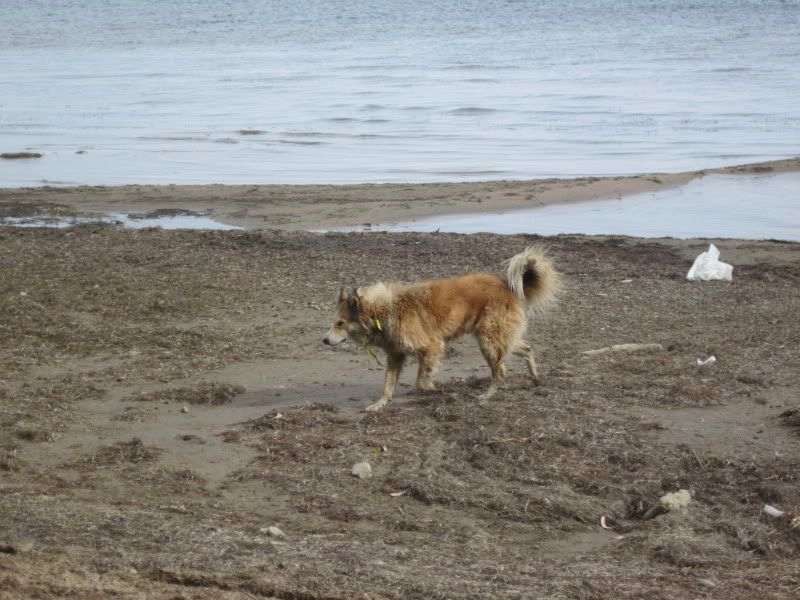
Wet dog
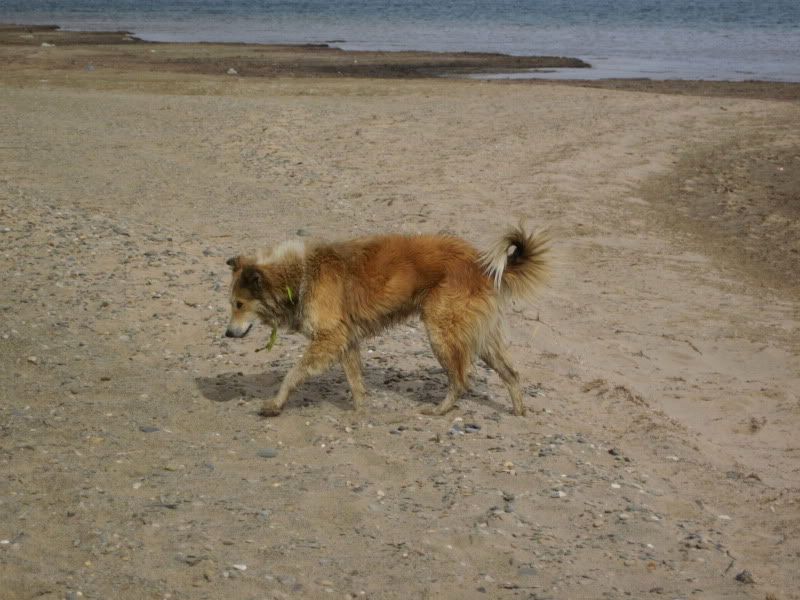
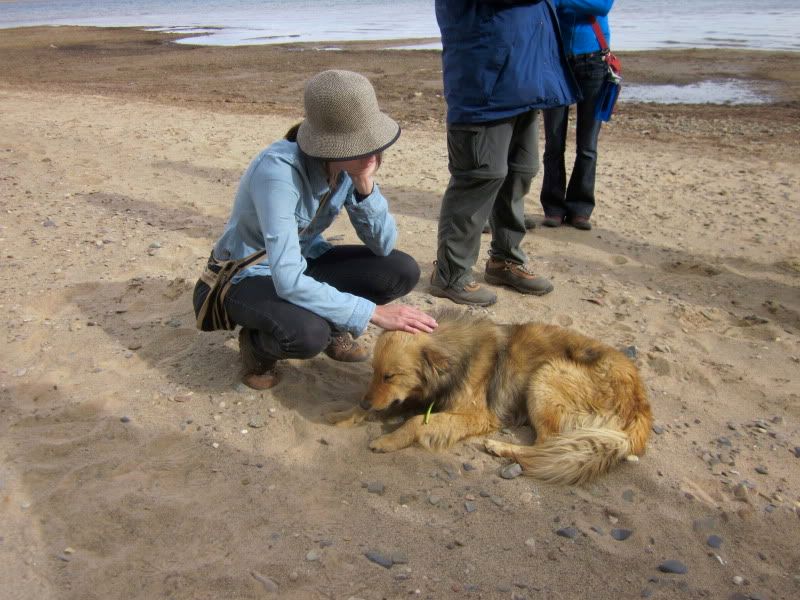
Tanya, my friend and room mate, petting the dog
We walked in between the large rocks and came out on the other side of the beach. Again, Don Tomas told us that mysterious things happen on this beach. For example, fishermen see strange things coming out of the lake. And one vacationing couple went skinny dipping here, and their friends ran off with their clothes. While we listened, I observed the lichens on the rocks, and a plant growing nearby (some kind of nightshade). I asked Don Tomas if they had any frogs, and he said that when he was a little boy, he was always playing with frogs and lizards, but now there were very few around. (This likely has to do with the introduction of agrochemicals, which I will address in my diary about the agriculture of Santiago de Okola.)
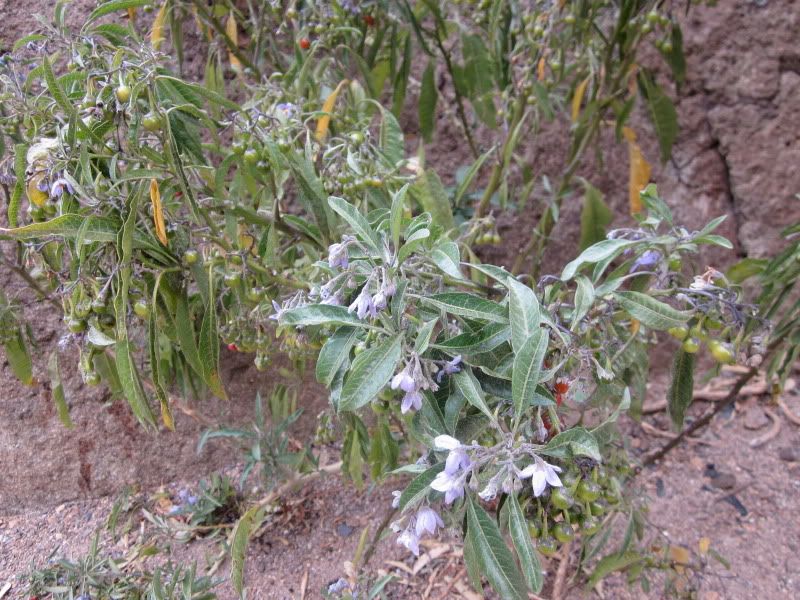
Nightshade
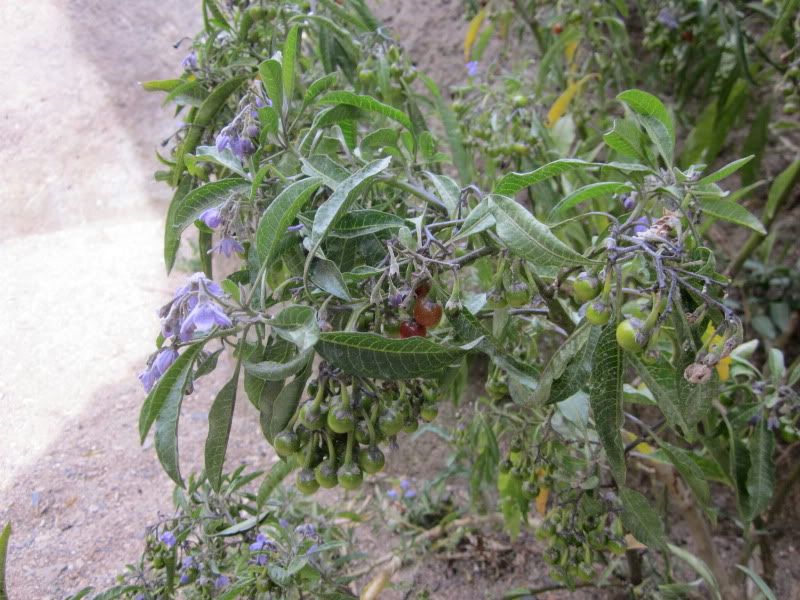
Another picture of the same plant
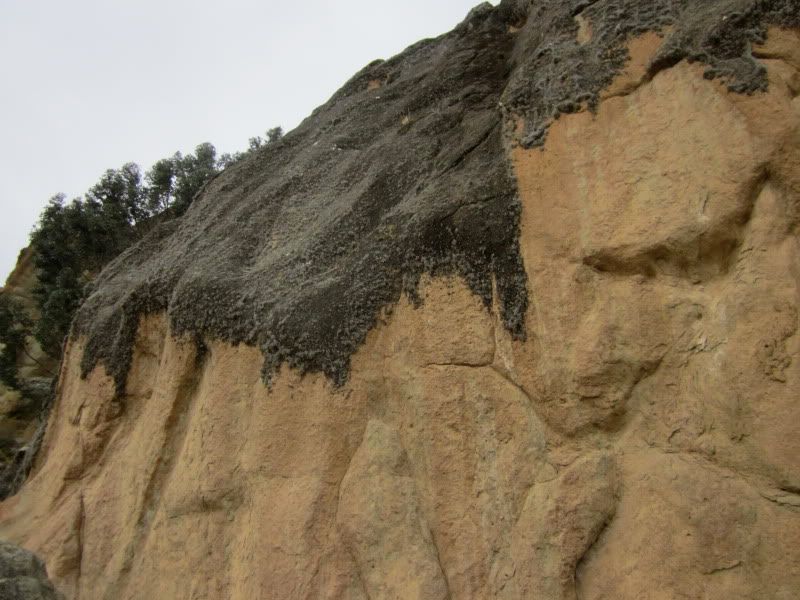
Lichens
At this point, the weather had gotten really, really cold. It gets pretty warm on the Altiplano when the sun is out, so I had spent the day walking around in 3/4 length pants and a T-shirt, with an alpaca sweater I put on when the sun went behind the clouds. At the end of the tour, I was freezing. That's how the weather on the Altiplano is. It's nice during the day, but at night it is absolutely freezing. Most people either bundle up and then deal with the heat when the sun comes out, or wear cool clothing and deal with the cold when the sun is gone. Our Bolivian tour guide told me this several times, which I think was a hint to let me know he thought I was ridiculous for taking my sweater off and putting it back on several times a day. Fortunately, the home I stayed at was near the beach, so I had a relatively short walk home.
Late that night, after dinner, everyone gathered together at the home of Don Tomas for a campfire. There are no S'mores on the Altiplano. Instead, the people from Santiago de Okola demonstrated to us some home made traditional instruments, one which was frequently played as a way of entertaining oneself while in the field herding sheep. The other was only played during a special ceremony during Carnaval when they would remove one potato from each plant to use as a seed for the next year.
As we listened and watched, a member of our group passed around a bottle of organic chocolate liqueur he had purchased at a "health" food store in La Paz (hey, it's organic!). The booze was a big hit with the locals. As the bottle went around the circle, someone made sure to share a bit with Pachamama by pouring a little on the ground each time it went around.
Our Bolivian tour guide, Gabriel, got up and told an entertaining story about what happened when the Europeans came and the horse met the llama for the first time. The horse said "I am bigger, stronger, and faster than you, so I am better." The llama said, "Very well, but let me tell you something before you conclude that you are better. I have a contract with the humans I work for. I will serve them by providing them with fiber, fuel (poop, which is burned), fertilizer (poop again), labor, and even food. But I only do this under three conditions. First, I will not be overworked. I will carry up to 50 lbs and if you put even 51 lbs on my back, I will sit down and not move. (This is true.) Unfortunately, I forget the second condition. And third, do not use me in a war. At that point, the horse shut up, defeated.
One of the men of Santiago de Okola then stood up and said that the traditions of their community were being lost during his lifetime. When he was a kid, the children would greet the Aymara New Year (in June) by climbing to the top of a mountain and doing a traditional song and dance. Now, the children no longer do this.
A member of our group asked if they have any rituals to make it rain. They told us that they refer to the mountains as their grandfathers, and to make it rain, they bring an offering of water to each of the mountains.
What I find very interesting is the mixture of Spanish (and Catholicism) and Aymara traditions that simultaneously exist in this village. The men and women of the village have Spanish names like Tomas, Juan, Vicente, Lucia, and Victoria, and they even use the Spanish title of "Don." They have a church, and they pray to Jesus. But they also have their own spirituality and traditions, and as you can see from the tour Don Tomas gave us, their Aymara spirituality is very real to them.
The next post I will write about Santiago de Okola will cover our weaving workshop, held first thing the next morning.
No comments:
Post a Comment